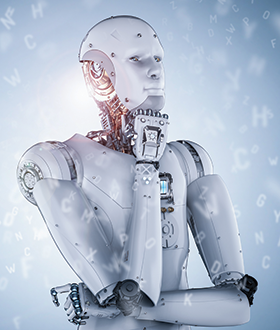

Ten years ago, I was quite proud of how smart the machines in our factory were. Now, with my current definition of smart, I realise they were quite stupid. Why? Because although they were doing what they were designed to do, the minute they encountered anything unexpected or out of the ordinary, they were stumped. They resorted to asking the operator ‘What is wrong with me?’
Troubleshooting and getting machines back up and running called for smart people − highly skilled operators and experienced software and hardware engineers. The problem is that in the last ten years, these people have become increasingly unavailable.
No more dumb questions
The obvious solution is that machines must get smarter so that they no longer must ask stupid questions. Machine builders engineer systems that can figure out for themselves why they have stopped or why there is a problem. This is already happening to some extent − the use of sensors so that the cartoning machine can tell the operator that it has run out of blanks, for example.
However, you can only get so far with sensors alone. Taking system autonomy to the next level requires artificial intelligence (AI) so that machines can use smart algorithms that can perform sophisticated analytics more akin to human brain circuitry. There is a lot of talk about using AI to emulate human thought processes in industrial applications, but real-time examples of businesses that are successfully unlocking the value of AI are few and far between
Common AI pitfalls
There are two main reasons for this: firstly, companies often fall into the trap of being too generic in their application of AI, and secondly, they do not know how to handle the explosion of data that this broad-brush approach generates. If you are going to look at how AI can be applied in your factory, you should first establish what problem you want to solve, or what improvement you want to make.
Omron’s AI Controller – the world’s first AI solution that operates at the edge with the hardware based on the Sysmac NY5 IPC and the NX7 CPU – will do all of that for you. This controller will record the data at a micro-speed and analyse it using pattern recognition based on process data collected directly on the production line. It is integrated into Omron’s Sysmac factory control platform, which means that it can be used in the machine directly to prevent efficiency losses.
AI in action
As an example, we are currently working with a food industry customer to improve seal integrity. Rather than relying on the operator to recognise when the sealing head is not performing as it should, the packaging machine uses AI to maintain repeatable performance. By applying an AI approach to the sealing operation, we will increase the shelf life by several days, and minimise the occurrence of faulty seals, thereby eliminating the risk of a complete product batch being rejected by retail customers.
Machine learning: bridging the experience gap
So far, I’ve only talked about harnessing AI to make machines smarter. The other development trajectory for AI is making people smarter. Data can be returned from physical assets – in this case highly experienced workers – and pattern recognition applied. Put simply, the skilled operator trains the machine, and the machine trains the unskilled operator.
In our laboratory, we are currently experimenting with AI-driven machines that ask operators to assemble products and record how they do it, to discover the smartest way of performing this task so that this technique can be taught to other operators. Another industrial application for machine learning might be the use of AI to establish what actions the operator should be performing on the machine. If the operator’s hands move in the wrong direction, for example, this generates an alert.
Only smarties have the answer
Enterprises that are well advanced on their digital transformation journey will be best placed to harness the value of
| Tel: | +27 11 579 2600 |
| Email: | [email protected] |
| www: | www.industrial.omron.co.za |
| Articles: | More information and articles about Omron Electronics |

© Technews Publishing (Pty) Ltd | All Rights Reserved